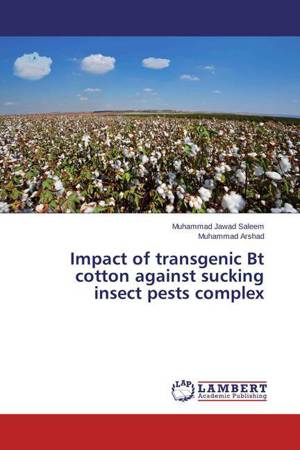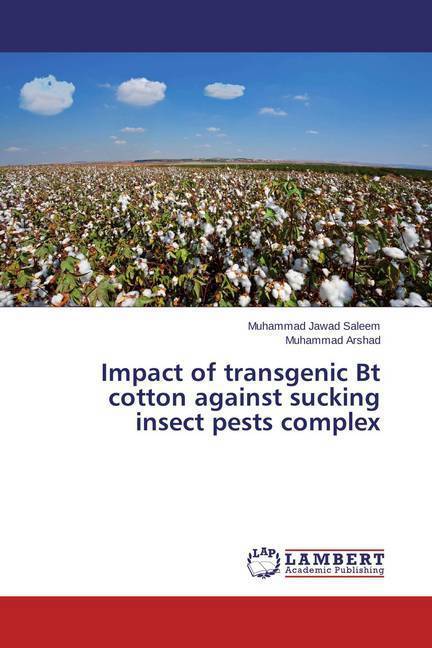
- Afhalen na 1 uur in een winkel met voorraad
- Gratis thuislevering in België vanaf € 30
- Ruim aanbod met 7 miljoen producten
- Afhalen na 1 uur in een winkel met voorraad
- Gratis thuislevering in België vanaf € 30
- Ruim aanbod met 7 miljoen producten
Zoeken
Impact of transgenic Bt cotton against sucking insect pests complex
Muhammad Jawad Saleem, Muhammad Arshad
Paperback | Engels
€ 53,95
+ 107 punten
Omschrijving
Cotton is a main cash crop of Pakistan as it plays a pivotal role in the economy. Cotton plant has been genetically modified to contain the toxic gene of Bacillus thuringiensis known as Transgenic Bt Cotton and it has been found successful in the management of bollworms; however, it also invites other insect pests especially sucking pests due to reduction in pesticide sprays at early stages. So, the present study was planned to measure the comparative resistance of six Bt cotton cultivars against major sucking insect pests (whitefly, jassid and thrips). The results of experiment showed that the transgenic cotton cultivar Bt-802 found comparatively resistant by having maximum impact on whitefly and jassid abundance which contained 7.97, 1.83 per leaf population respectively. Transgenic cotton cultivar Bt-806 had maximum impact on thrips population by holding lowest population (5.80 per leaf thrips). The sucking insect population had negative correlation with relative humidity and rainfall while temperature had positive correlation. In case on psysico-morphic plant character gossypol glands and hair leaf density had significant impact on sucking insect pest population.
Specificaties
Betrokkenen
- Auteur(s):
- Uitgeverij:
Inhoud
- Aantal bladzijden:
- 100
- Taal:
- Engels
Eigenschappen
- Productcode (EAN):
- 9783659432583
- Verschijningsdatum:
- 5/03/2015
- Uitvoering:
- Paperback
- Afmetingen:
- 150 mm x 220 mm
- Gewicht:
- 159 g

Alleen bij Standaard Boekhandel
+ 107 punten op je klantenkaart van Standaard Boekhandel
Beoordelingen
We publiceren alleen reviews die voldoen aan de voorwaarden voor reviews. Bekijk onze voorwaarden voor reviews.








